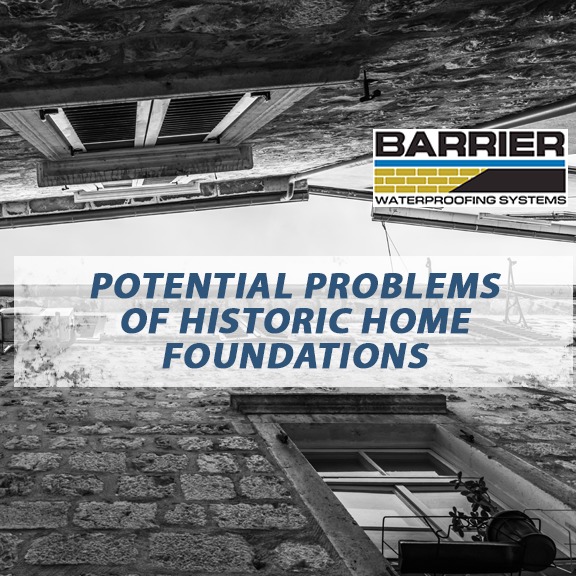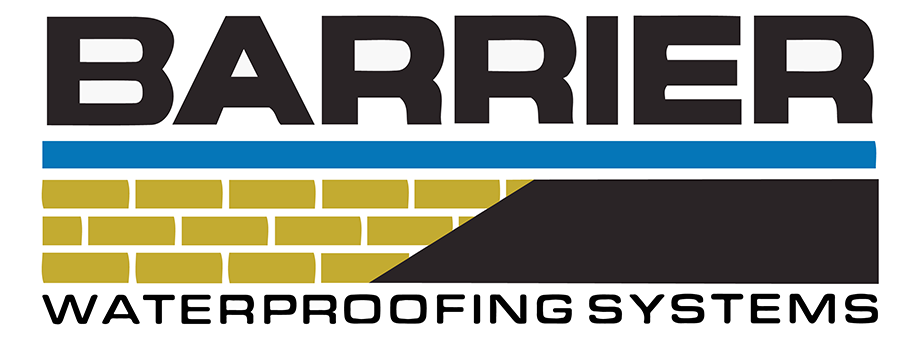Stone foundation is very common in older homes, particularly homes that are over 100 years old. There are many kinds of stone foundations, believe it or not!
These stone foundations range in composition from limestone, sandstone, river stones, and fieldstones. Of course, the type of stone would warrant the types of problems that are likely to be encountered with each foundation.
These problems can include sloping floors, cracked plaster, bulging, bowing, or shifting. Regardless of what type of stone your home has or how old your home is, it will benefit you to know what problems you might eventually face. The good news is, historic home foundations can be repaired all the same.
Field and River Stone Foundations
Field and river stone foundations are understandably the oldest technique used for stone foundations. This is probably because they are relatively easy to come across. They tend to be round in shape, as well as harder and more durable than limestone or sandstone.
Limestone and Sandstone Foundation
Limestone and sandstone are softer types of rock. If you are able to use a hard utensil to scratch the stone fairly easily, then you probably have limestone or sandstone. Limestone does take a little bit more effort than its sandstone counterpart, but is easier to scratch than other stones. Limestone and sandstone foundations are made with cut blocks or rubble stones ranging from small to large in size. These blocks or stones are interlocked as broken pieces like a puzzle. Colors range from off-white to red with the most typical color being beige.
Rubble Stone Foundations
Rubble stone foundations are the oldest type of stone foundation techniques and date back hundreds (and even thousands!) of years. These foundations were used in Central America, South America, and when making the pyramids of Mexico.
Usually laid at the bottom of the foundation trench are large, flat stones made of limestone. Rubble stones are commonly 1/3 wider than the stones laid above them, with the walls being constructed of randomly sized and uncut stones. They are also interlocked like a puzzle, much like limestone and sandstone.
Between the stones is a lime-based mortar installment. A lime-based stucco-like coating is used for the exterior of the rubble stone foundation.
This is called “parging” and is applied from the top of the foundation wall down to the footing. Rubble stone foundation tends to be one of the most easily repaired foundations due to the interlocked, tightly woven stones. They rarely move from their place, even if large amounts of mortar have failed.
Cut-Stone Block Foundations
This type of foundation is made using a construction of stones cut into uniform blocks at the same excavation. In earlier houses, a lime-based mortar was used and in later houses, a Portland cement was used.
Block-Faced Rubble Stone Foundations
Well if that isn’t a mouthful! This technique merits a very uniform foundation. It is basically the same as rubble stone foundation, except with a much more uniform look and finish to it.
Phew! So, after covering the different types of stone foundations, here are some of the most common problems found amongst them. We also give some tips on how you can go about fixing them.
When it may need Mortar Repair:
If you find the mortar is either generally missing, or seems to be crumbling.
When it may need gutter maintenance and a call to an excavator:
If you spot deterioration from excessive, constant moisture. Grading of the ground away from the foundation and ground extenders can also help resolve this issue.
When it may need removal of paint and/or cement:
If the interior foundation seems to be trapping water with the added appearance of flaking paint. Removing the cement or paint will allow the rest to flake off over time. Frozen or trapped moisture can also cause mortar deterioration and stone spalling.
When you may need to call historic home foundations repair company like Barrier Waterproofing Systems:
- Your foundation has cracks that are large or look like stair-steps.
- The cut-stone blocks are cracked or broken.
- Your foundation shows efflorescence, a salt that has migrated to the surface of the foundation material.
- One or more sections of the foundation are bowing inward or collapsing.
- The mortar between the stones is showing excessive deterioration and water is entering the basement.
Preserving historic home foundations might be a tall task compared to more modern built homes. It is well worth the investment if you enjoy securing that piece of history and, better yet, being able to enjoy it from the inside out!
If your home is experiencing any of the ailments listed above, give your local foundation repair experts a call and schedule an evaluation. We can help you determine the extent of the damage and the types of repair that will be necessary to correct it in the most efficient way possible. Call Barrier Waterproofing Systems today at (615) 257-1060 | (931) 536-1168.

